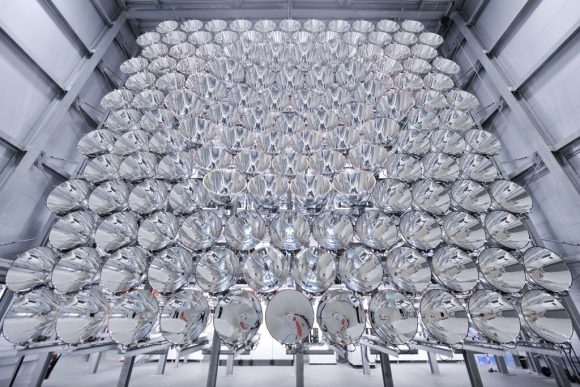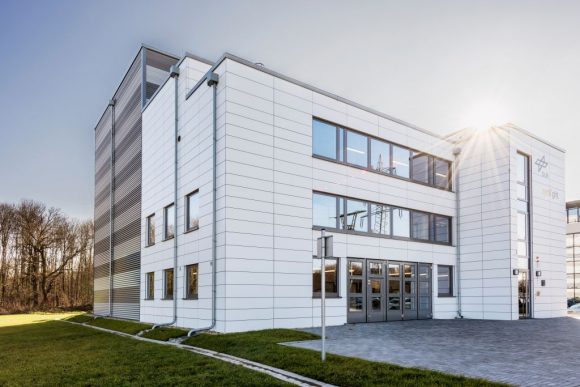Hydrogen is the most abundant element in the Universe. But here on Earth, it's rather rare. That's unfortunate, because in our warming world, its status as an emissions-free fuel makes it a coveted chemical. If German researchers are successful, their Synlight project will help make renewable hydrogen fuel a reality.
Dubbed the "artificial Sun", the Synlight uses concentrated light to power Thermochemical Water Splitting (TWS.) Every school child knows you can produce hydrogen by electrolysis—running an electric current through water. But that takes an enormous amount of electricity. TWS might be a better way of getting hydrogen out of water, but it takes an enormous amount of energy too, and that's what the German research is about.
When combusted with pure oxygen—inside a fuel cell for example—hydrogen's only waste product is water. No greenhouse gases or particulates are produced. But if we want to use it to power our cars, buses, trucks, and even airplanes, we need enormous amounts of it. And we need to produce it cost-effectively.
"Renewable energies will be the mainstay of global power supply in the future." - Karsten Lemmer DLR Executive Board Member
The idea is to use the heat generated by Concentrated Solar Power (CSP) to extract hydrogen from water, thereby eliminating the need for electricity. CSP systems use mirrors or lenses to concentrate a large area of sunlight into a small area. The heat from that action can be used to power TWS. The Synlight project in Germany is demonstrating the viability of TWS by mimicking the effect of concentrated sunlight. In doing so, researchers there are building what's being called the world's largest artificial Sun.

Each of Synlight's 149 zenon short-arc lamps can be controlled individually. Image: DLR/Synlight/Markus Hauschild
German researchers at the German Aerospace Center (DLR) at Julich near Cologne built the Synlight, a system of 149, high power lamps of the type used in film projections. When all these lamps are turned on, Synlight produces light that is about 10,000 times more intense than natural sunlight on Earth. When all the lamps are aimed at a single spot, Synlight generates temperatures up to 3000 Celsius. The challenge now is to develop materials and processes that can operate in such an extreme temperature.

The 15m tall Synlight experiment is housed in this building in Julich. The building contains 3 separate radiation chambers for different experiments. Image: DLR CC By 3.0
The Synlight system itself uses an enormous amount of electrical power to operate. But that's often the case with experimental facilities. The Synlight project will mimic the effect of intense, continuous solar energy, something that is not readily available in Germany. By building a test facility powered by electricity, researchers will be able to reliably perform experiments without being delayed or affected by cloudy weather.
"Fuels, propellants and combustibles acquired using solar power offer immense potential for long-term storage and the production of chemical raw materials, and the reduction of carbon dioxide emissions. Synlight will enhance our research in this field." - Karsten Lemmer, DLR Executive Board Member
As Johannes Remmel, the North Rhine-Westphalia Minister for Climate Protection, said, ""We need to expand existing technology in practical ways in order to achieve renewable energy targets, but the energy transition will falter without investments in innovative research, in state-of-the-art technologies and in global lighthouse projects like Synlight."
This is not the German Aerospace Center's first foray in concentrated solar power. They're involved in a number of projects to advance concentrated solar power and thermal water splitting. The DLR is a partner in the Hydrosol II pilot in Spain. It's a reactor for solar thermochemical hydrogen production that has been in operation since 2008. They're also involved in the first commercially operated solar tower plant, an 11 megawatt system in Spain called the PS10 solar power tower.
No comments:
Post a Comment